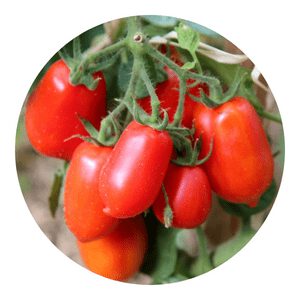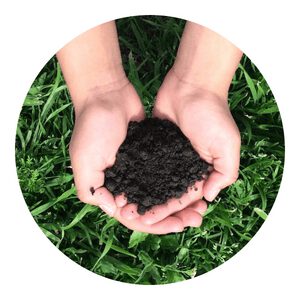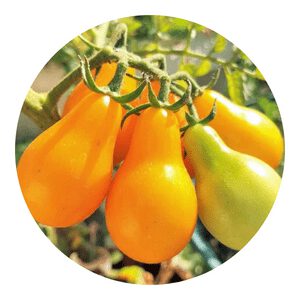How To Grow Roma Tomato
Growing Roma tomatoes can be a rewarding experience for any at-home gardener.
Not only do you get to enjoy the fruits of your labor, it’s also a great way to get in touch with nature and spend time outdoors.
Roma tomatoes are the perfect choice for beginner gardeners as they are easy to grow and incredibly versatile.
Plus, they’re incredibly flavorful and make a great addition to salads and sauces.

Roma Tomato Menu
Growing Roma Tomatoes
Growing Roma tomatoes is a great way to enjoy delicious and nutritious home-grown produce.
Roma tomatoes are an Italian heirloom variety that have a concentrated flavor, making them perfect for canning, sauces, and stews.
If you’re looking to grow your own Roma tomatoes in your garden or window box this season, here are some tips on how to get started.
First of all, choose a sunny spot with at least 8 hours of direct sunlight each day.
The soil should be well-drained and abundant in nutrients; consider adding compost or manure before planting the seeds or seedlings.
Plant the seeds 1/4 inch deep in rows about 12 inches apart.
Once sprouted, thin out the plants so they’re spaced about 18 inches apart for better airflow and sun exposure.
Soil: Required Nutrients
Soil is a key component to growing Roma tomatoes.
The soil must contain the necessary nutrients for the growth of healthy, juicy Roma tomatoes.
To ensure optimal production and taste, select a soil that contains all of the required nutrients for tomato plants.
The essential nutrients needed by tomato plants include nitrogen, phosphorus, and potassium.
Nitrogen helps promote foliage growth while phosphorus aids in the development of flowers and fruits.
Potassium strengthens root systems which make plants more resilient to drought or other environmental stressors.
Additionally, magnesium is vital for photosynthesis as it helps move energy from leaves to fruit-bearing stems.
Calcium also plays an important role as it keeps plant cells firm and strong throughout its growth cycle.
Lastly, sulfur helps with chlorophyll formation which increases yields in tomato plants over time.
Sunlight: Hours of Exposure
Sunlight is an essential element for any successful tomato garden.
For Roma tomatoes, it is especially important that they receive the recommended hours of daily sunlight to ensure they grow and produce quality fruit.
It’s best to plant Roma tomatoes in a spot where they can get at least eight hours of direct sun every day.
If your garden receives partial shade through the day, Roma tomatoes may still thrive but yields will be lower than if placed in full sun.
The more intense and longer the exposure to sunlight each day, the better your harvest will be.
If you’re limited on space or don’t have access to an outdoor garden, consider growing your Roma tomatoes indoors with artificial light sources such as fluorescent bulbs or LED grow lights.
This option requires more effort and resources but it can also guarantee maximum growth potential and yield for your plants.
Ripe and plump tomatoes - Roma so sweet, With vines that grow tall and thick in full bloom, Red and juicy, ready to eat. Deliciously flavorful when picked right in time, Adding color on plates with vibrant finesse. No wonder chefs all over love it so. In salads or sauces they make a delightful show! Grow Roma Tomato, God’s masterpiece!
Chappy The Gardener
Watering: Frequency and Amounts
Watering is a critical factor in the success of any tomato crop, especially those grown indoors.
When it comes to watering Roma tomatoes, the frequency and amounts should be closely monitored so your plants will have the best chance of producing a plentiful harvest.
Knowing how often to water and how much is key to keeping your plants healthy and yielding fruit season after season.
The amount of water needed for your Roma tomato plants will depend on several factors such as soil type, temperature, humidity levels, light exposure and overall size of the plant.
Generally speaking, during their growth cycle they should receive between 1-2 inches per week through deep watering sessions every other day or three times a week at minimum.
This ensures that their root systems are able to absorb enough moisture while allowing time between sessions for some drainage and air flow to occur within the soil itself.
Supporting: Stakes or Cages
Supporting: Stakes or Cages is a comprehensive guide to growing Roma tomatoes.
Roma tomatoes are one of the most popular varieties of tomato due to their sweet flavor, firm texture and attractive appearance.
Whether you choose stakes or cages for support, this guide will provide all the information needed to start your own garden.
Staking is an excellent way to support your tomato plants as they grow taller and heavier with fruit production.
Stakes can be made from wood, metal or plastic – whatever works best for you!
With stakes, it’s important that they reach deep into the soil so they don’t topple over when windy conditions occur.
Harvesting: When and How
Harvesting is one of the most important steps in producing a successful tomato crop.
Whether you have planted Roma tomatoes or another variety, understanding when and how to harvest them is essential for getting a good yield and quality fruit.
Knowing when to harvest your tomatoes is key.
Most Roma tomatoes will be ready for harvesting between 70-85 days after planting, depending on the weather conditions in your area.
It’s important to check their ripeness regularly; look for a deep red color that’s firm but not too hard or soft.
You can also test them by gently squeezing the tomato with your fingers – if it gives slightly they are ready to pick.
Once harvested, tomatoes should be used within a few days as they do not store well at room temperature and will start to spoil quickly.
Pests & Diseases: Prevention & Control
Pests and diseases can pose a huge threat to the successful growth of Roma tomatoes.
To ensure that your crop will thrive, it’s important to take preventative measures against pests and diseases.
Fortunately, there are several strategies you can use to control them.
Common pests that attack Roma tomatoes include aphids, cutworms, whiteflies and grasshoppers.
These insects feed on the foliage or stem of the plant, resulting in wilting leaves and stunted growth.
Prevention is key; regularly inspecting your plants for signs of infestation is essential to protect your crop from these damaging pests.
Additionally, using insecticidal soap or neem oil spray can help deter their presence as well as help reduce their numbers if an infestation has already occurred.
Organic Fertilizer For Roma Tomato
Organically grown Roma tomatoes can provide a delicious, nutritious addition to any meal.
Growing these tomatoes requires careful attention to soil quality and feeding the plants correctly.
Organic fertilizer is an ideal choice for tomato growers, as it provides essential nutrients in a natural way that doesn’t contaminate the soil or produce toxic runoff.
In this article, we’ll explain how organic fertilizers can help you grow the perfect Roma tomato.
Organic fertilizers work best when they are applied at least once when planting and again after each fruit set.
They are made with natural ingredients like composted animal manure and plant matter such as seaweed extract that quickly break down in the soil to deliver essential nutrients directly to the plant roots.
This slow-release method helps your Roma tomato plants stay nourished throughout their growth cycle without overloading them with too much fertilizer too quickly which can cause nutrient burn or other damage.
Maximizing Yields
Growing Roma tomatoes can be an incredibly rewarding experience.
Whether you’re a seasoned gardener or just starting out, maximizing yields of this versatile crop is an achievable goal.
With the right information and practical techniques, any gardener can enjoy a plentiful harvest of Roma tomatoes.
When planting, it’s important to choose the right variety for your climate and space.
Start indoors about 6-8 weeks before the last frost and transplant when nighttime temperatures stay above 50 degrees Fahrenheit.
Plant in loamy soil in an area that gets at least 8 hours of direct sunlight daily with spacing between plants of 18-24 inches apart.
Make sure to give your plants plenty of food, such as compost and fertilizer, focusing on nitrogen-rich products to ensure healthy growth and high yields.
Roma Tomato Seeds
Roma tomatoes are the ideal choice for gardeners who want to grow delicious, juicy tomatoes with minimal effort.
This hardy variety of tomato is highly productive and produces fruits that can be used in a variety of ways.
With the right preparation, Roma tomato seeds can produce a bountiful harvest throughout the growing season.
Growing Roma tomatoes from seed is simple and requires only basic gardening knowledge and tools.
First, it’s important to select high-quality organic seeds and start them indoors at least 8 weeks before outdoor planting season begins. After sowing the seeds in soil, they need to be kept consistently moist so they will germinate properly.
Once sprouts appear, they should receive adequate sunlight every day until they are ready to be transplanted outside into a sunny spot with well-draining soil.
How To Grow Roma Tomato Hydroponically
Growing Roma tomatoes hydroponically is an easy and efficient way to produce a large yield of delicious, healthy tomatoes.
Hydroponic growing requires less space than traditional soil-based gardening, and yields a much larger harvest with fewer pests or diseases.
Roma tomatoes are particularly well suited for hydroponic growing due to their compact size.
With the right tips and techniques, anyone can grow Roma tomatoes at home in no time.
Hydroponics provide the perfect environment for tomato plants to thrive as they supply nutrients directly to the plant’s root system without having to use soil as a medium.
It is important to choose quality nutrient solutions specifically designed for tomato plants when setting up your hydroponic garden.
Additionally, it is important that you select the right types of containers that will allow air circulation around the roots while also providing enough space for growth.
How To Grow Roma Tomato Aquaponics
Growing Roma tomatoes in aquaponics is an easy and rewarding way to enjoy a bounty of fresh, flavorful produce.
This type of tomato is known for its versatility in cooking and its thick flesh, which makes it perfect for slicing.
Aquaponics combines the techniques of hydroponics and aquaculture to create a symbiotic relationship between plants and fish.
As the fish release nitrogen-rich waste into the water, bacteria break it down into nutrients that can be absorbed by the roots of your plants.
Here’s how to grow Roma tomatoes with this innovative method:
Begin by setting up your aquaponic system in an area that receives plenty of sunlight but is protected from extreme temperatures.
Choose a variety of hardy fish such as tilapia or catfish that are well suited for warm climates, then fill your tank with water.
How To Grow Roma Tomato in a Pot
Growing a Roma tomato in a pot is an easy and productive way to get fresh tomatoes in your kitchen.
With the right soil, sunlight, and water, you can have homegrown tomatoes all summer long!
When growing tomatoes in pots, it is important to use well-draining soil that contains organic matter such as compost or manure.
The pot should be at least 12 inches deep and wide enough for the roots of the plant to spread out comfortably.
For best results, place the pot outdoors where it will receive at least 8 hours of direct sunlight each day.
Once planted, give your tomato plants plenty of water but do not overwater them—tomatoes hate wet feet!
How To Grow Roma Tomato in a Raised Beds
When it comes to tomatoes, Roma tomatoes are always a favorite for gardeners.
These plum-shaped tomatoes have a mildly sweet flavor and are the perfect addition to salads or can be canned for use in sauces and other recipes.
Growing Roma tomatoes in raised beds is an excellent way to make sure that your plants have enough room to reach their full potential.
Here’s how you can grow Roma tomato in your own raised bed garden:
Start by preparing the soil with compost or aged manure.
Make sure that the ground is evenly moist before planting the seeds or seedlings.
Plant your seeds or seedlings at least 18 inches apart, as these plants require plenty of space to grow properly.
When it comes time to water, avoid using a sprinkler system as this will cause root rot due to too much moisture saturating the soil around each plant’s base.
In conclusion,growing Roma tomatoes can be an immensely rewarding activity, not only for its delicious results but also because of the satisfaction that comes with it.
If you have a passion for gardening and are looking to add a new variety of tomato to your garden, then the Roma is a great choice.
With proper planning and care, you will be able to reap the rewards of growing this unique variety of tomato.
Click To Grow
Helps Us Grow – Share If You Like

















